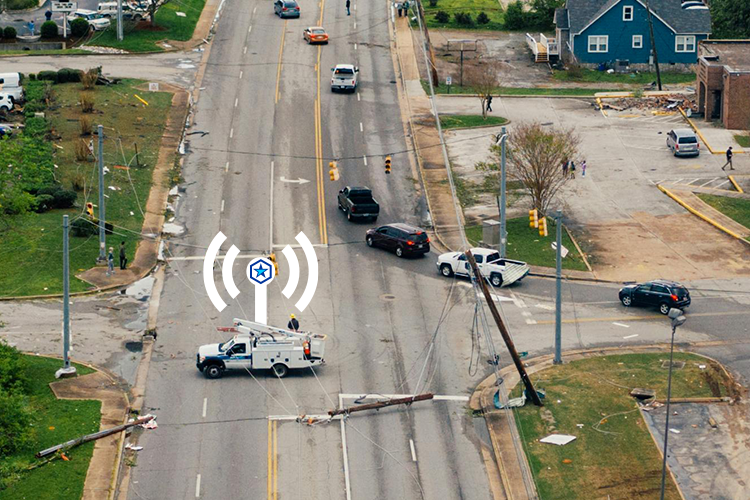Telematics and the devices that empower it have emerged as game-changing fleet management tools. These small yet powerful pieces of technology are revolutionizing how businesses monitor, manage, and optimize their fleets.
But what exactly does a telematics device do, and how does it work? Let's dive into the world of fleet telematics and explore its far-reaching impact.
Understanding Telematics Devices
A telematics device is a sophisticated piece of hardware that combines GPS technology with onboard diagnostics to capture and transmit real-time data about a vehicle or asset. These devices are typically installed in vehicles, but their application extends beyond traditional fleets to include non-vehicle assets like generators and heavy machinery.
Key Components of a Telematics Device
- GPS Module: Provides accurate location data
- Onboard Diagnostic (OBD) Connection: Interfaces with the vehicle's computer
- Cellular or Satellite Modem: Enables data transmission
- Accelerometer: Measures vehicle movement and driver behavior
- Processor: Analyzes and processes collected data
How Fleet Telematics Works
Fleet telematics operates on a simple yet powerful principle: collect, transmit, analyze, and act. Here's a breakdown of the process:
- Data Collection: The telematics device gathers a wide range of data points, including:
- Vehicle location and speed
- Engine performance metrics
- Fuel consumption
- Driver behavior (acceleration, braking, cornering)
- Vehicle diagnostics and fault codes
- Data Transmission: Using cellular networks or satellite communication, the device sends this data to a central server in real-time or at predetermined intervals.
- Data Processing and Analysis: Cloud-based software processes the raw data, transforming it into actionable insights through advanced analytics and machine learning algorithms.
- Visualization and Reporting: Fleet managers access this information through user-friendly dashboards and reports, enabling data-driven decision-making.
The Power of Telematics in Action
Telematics devices offer a wealth of benefits that extend far beyond simple vehicle tracking. Let's explore some key applications:
1. Enhanced Fleet Visibility
With real-time GPS and telematics tracking, fleet managers can monitor the location and status of every asset in their fleet. This visibility enables more efficient dispatching, route optimization, and improved customer service through accurate ETAs.
2. Improved Safety and Driver Behavior
Telematics devices can monitor driving behaviors such as speeding, harsh braking, and rapid acceleration. This data can be used to implement driver scoring systems and targeted training programs, ultimately reducing accidents and improving overall fleet safety.
3. Video Telematics Integration
Many modern telematics solutions now incorporate video capabilities. These systems can provide visual context to driving events, offering invaluable insights for driver coaching and accident investigations. Video telematics can also help protect drivers from false claims and provide evidence in case of disputes.
4. Predictive Maintenance
By continuously monitoring engine diagnostics and performance metrics, telematics devices can predict potential mechanical issues before they lead to breakdowns. This proactive approach to maintenance can significantly reduce downtime and repair costs.
5. Fuel Efficiency Optimization
Telematics devices provide detailed insights into fuel consumption patterns, helping fleet managers identify and address inefficiencies. From reducing idling time to optimizing routes, these insights can lead to substantial fuel savings.
6. Regulatory Compliance
For industries subject to strict regulations, such as the trucking sector, telematics devices simplify compliance. They can automate hours-of-service logging, facilitate electronic logging device (ELD) mandates, and ensure adherence to other regulatory requirements.
7. Asset Utilization and Management
Beyond vehicles, telematics can be applied to a wide range of assets. For example, telematics devices on generators can monitor runtime, fuel levels, and maintenance needs, ensuring optimal utilization and preventing theft.
The Future of Telematics
As technology continues to evolve, so too does the potential of telematics devices. Integration with artificial intelligence and machine learning is opening up new possibilities for predictive analytics and autonomous fleet management. The rise of 5G networks promises even faster and more reliable data transmission, enabling real-time decision-making on an unprecedented scale.
Conclusion
Telematics devices are more than just GPS trackers; they're comprehensive fleet management tools that provide unparalleled insights into every aspect of your operations. By harnessing the power of real-time data, these devices enable businesses to optimize their fleets, improve safety, reduce costs, and stay ahead in an increasingly competitive landscape.
As we look to the future, it's clear that telematics will continue to play a crucial role in shaping the fleet management industry. Whether you're managing a fleet of vehicles, a collection of heavy machinery, or a network of remote assets, telematics devices offer the visibility and insights needed to drive your business forward.



